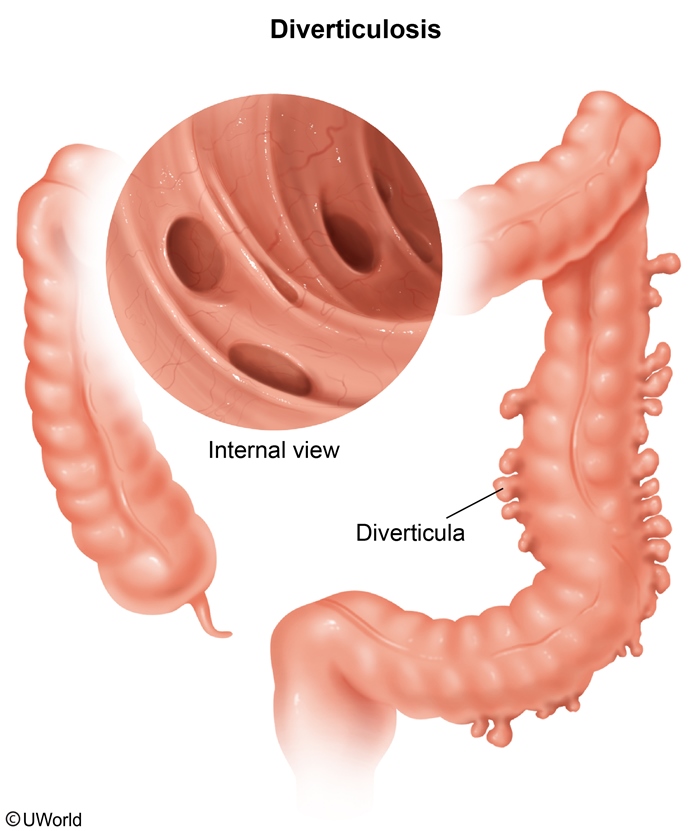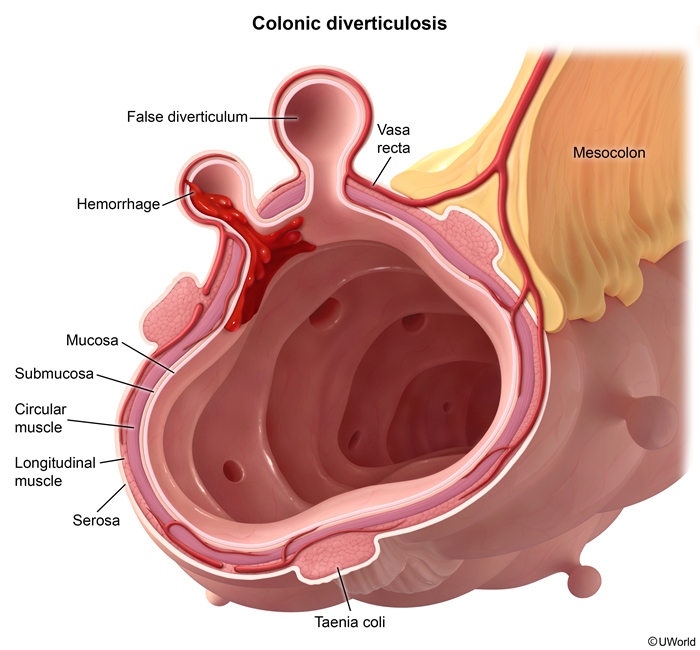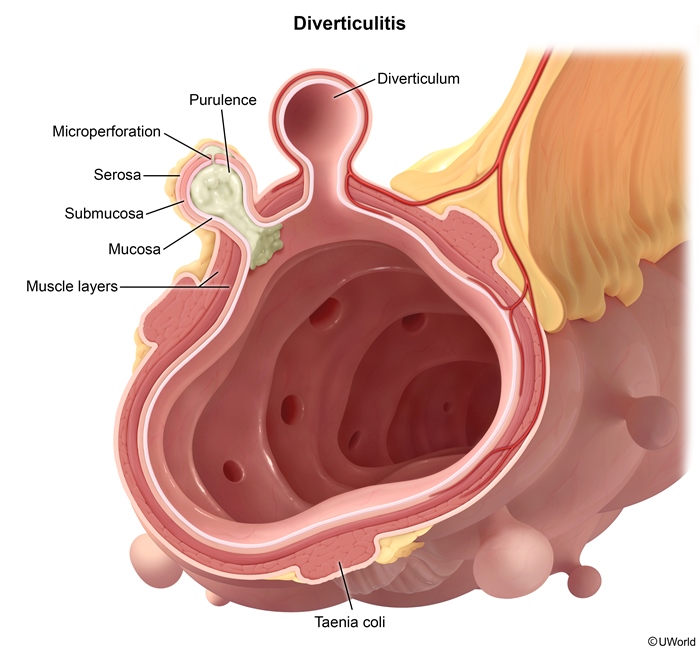Diverticular Disease: Diverticulosis, Diverticulitis, And Diverticular Bleeding
Article Sections
Introduction
Diverticular disease consists of diverticulosis, diverticulitis, and diverticular bleeding. Diverticulosis refers to asymptomatic outpouchings (diverticula) in the colonic wall. Diverticulosis can result in diverticulitis (inflammation of the diverticula) or diverticular bleeding (due to erosion of the arteries in the diverticula). Diverticulitis and diverticular bleeding occur in 5%-15% of patients with diverticulosis.
Pathogenesis
Diverticulosis is caused by herniation of the colonic mucosa and submucosa through the circular and longitudinal muscle layers of the colonic wall (Figure 1). It occurs at weak areas of the colonic wall where arteries (vasa recta) penetrate the muscularis.
The arteries cover the domes of the diverticula and are protected only by the mucosa on the luminal side; when these arteries become eroded, diverticular bleeding results (Figure 2).
Diverticulitis occurs when food particles trapped in the diverticula and increased intraluminal pressure (possibly from excessive contractions or straining) cause necrosis and microperforation of the diverticula, which lead to inflammation (
Continue Learning with UWorld
Get the full Diverticular Disease: Diverticulosis, Diverticulitis, And Diverticular Bleeding article plus rich visuals, real-world cases, and in-depth insights from medical experts, all available through the UWorld Medical Library.
Figures


